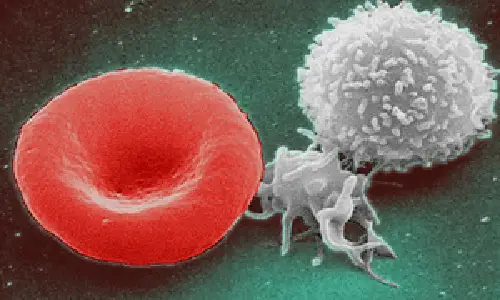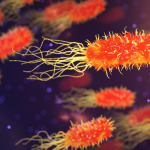1. White blood cells are protectors of the body.
• They are the cells that make up the immune system.
• They are the front-liners germ-fighting cells of the body by attacking and destroying bacteria, virus and other invaders that causes diseases.
2. White blood cells are produced in bone marrow.
• About 60 percent of white cells are generated from the stem cells of marrow of the central bones and the remaining 30 % of white cells come from spleen and liver.
3. White blood cells are disease indicators.
• White blood cells are also known as leukocytes.
• A significant increase in white blood cells in the blood suggests infection and proliferation may be associated with underlying health problems. From the Greek word “leuko” means white and “kytos” means “hollow vessel”.
• White blood cells have three major groups; Granulocytes (neutrophils, basophils and eosinophils), monocytes and lymphocytes.
• There types of white blood cells have diverse functions.
• During infection, the body releases immune cells that make it rise rapidly to ward off harmful intruders.
• White cells are also capable of ingesting toxins released from damaged cells.
4. White blood cells can be influenced by stress.
• A certain level of stress can be healthy at some point, but excessive stress can lead to a potential threat and can harm the body.
• When feeling stressed, the body can sense it and sends signal to the brain which will stimulate the immune system to manage and address the problem causing a rise in number of white blood cells.
5. White blood cells are best enhanced with vitamin C.
• Vitamins are necessary to enhance and boost immune health.
• White cell production in the body is dependent with vitamins especially ascorbic acid (vitamin C) which play an essential role in white blood cell synthesis.
6. White blood cells do not have hemoglobin.
• There are major components of the blood; red blood cells, white blood cells and plasma.
• These are the middle cellular component of the blood; independent single-cell having nuclei that are stored in the lymphoid tissues and blood (at low level) which goes with circulation.
7. White blood cells increases during pregnancy.
• There are numerous bodily changes during pregnancy including physiologic ones.
• An increase in white cell count (neutrophils) is normal. Furthermore, a slight increase of WBC count is typical in active labor.
• A reference value serves as the basis to ensure that blood count is within the normal range of hematologic parameters.
8. White blood cells serve a purpose in donated blood.
• WBC accounts only about 1% of your blood.
• Different components of blood are separated through the process of centrifugation.
• White cells can be filtered out from red cells to make a product for transfusion in cases of life-threatening infections and severe immunocompromised conditions.
9. White blood cells have a very short life span.
• They are only up to serve the body for one to three days this is why bone marrow is constantly producing white blood cells.
10. White blood cells are memory cells.
• White blood cells are fast learners and have the ability to retain its memory.
• They literally “learnt from the past”.
• T-lymphocytes and B-lymphocytes are types of white cells (also known as memory cells) that play an exceptional role in adaptive immunity.
• Most diseases are recurrent in nature. that may possibly recur in the future
• This mechanism is carried on to combat and eventually defeats diseases in cases of reintroduction of same pathogens and infections.











Leave a Reply